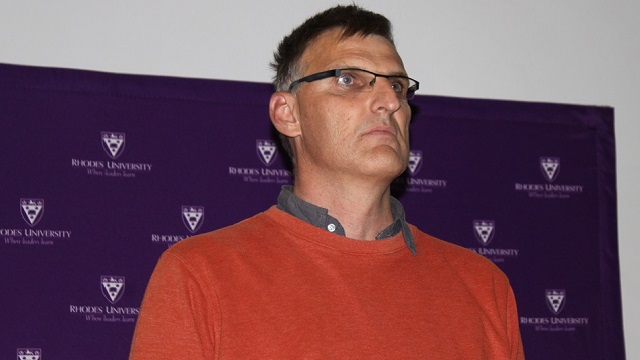
At university, having an invisible disability* (which includes mental disabilities such as bipolar disorder, depression and anxiety) is challenging as students can be subjected to stigmatisation because of their illness. Students might inadvertently be stigmatised by lecturers or supervisors whose relationship with students is pivotal to their success and the completion of their degree.
Disability Week, which took place from 14-18 May was aimed at raising awareness about the unique challenges people living with disabilities face. This year’s theme, “Making the invisible visible”, focused on psychosocial disabilities. Dr Richard Vergunst, a Post-Doctorate fellow of the psychology department at Stellenbosch University, delivered a keynote address regarding psychosocial disabilities in a university setting, on 18 May at the Barrat Lecture Complex.
In his address, he spoke about the conditions under which people with mental disabilities found themselves in universities and how their relationships within the institution affected their capabilities. He proposed a number of solutions as a way forward.
Dr Vergunst, a holder of four degrees, himself has been diagnosed with obsessive compulsive disorder (OCD) and depression. In the past, this disability seriously affected his functioning on a day-to-day basis. After more than 20 years of not disclosing his psychosocial disability, he finally told his supervisor while completing his PhD, and it was through the guidance and support of his supervisor that he was able to complete his PhD. This is an example of how important the relationship with supervisors and/or lecturers is in helping students adjust and cope with the demands of their academic lives.
He argued that physical disabilities could sometimes be regarded as more acceptable in society than invisible disabilities, in the sense that physical disabilities tend to be more immediately visible. Students with invisible disabilities face a number of challenges, including being subject to misconceptions and stereotypes regarding the legitimacy of their disability, as well as their need for support and protection. Further challenges include the validity and limitations of their disability being disputed. Lastly, students with invisible disabilities still often experience discrimination and oppression when attending higher education institutions, which often leads to poor performance and sometimes early exit from the university.
Dr Vergunst posed a number of solutions to these challenges. One solution would be to provide a number of support structures for students to help them navigate the institution and to overcome these obstacles. This would, amongst other support, require the training of lecturers, academic staff, and supervisors, in order to create awareness among them. Since the supervisor/lecture-student relationship is one of the most important factors influencing the completion of research projects, there is an urgent need to assess these relationships from an invisible disability standpoint.
Dr Vergunst proposed more research be made into the matter, as this allows for the creation of a discourse, which makes the situation more real and valid. Even though there is still reluctance on the part of the students to disclose their disabilities because of fear that they will be stigmatised, Dr Vergunst believes that self-disclosure (disclosing your mental illness to your supervisor and/or lecturer) by students is important in making invisible disabilities visible.
In order for this to be effective, he highlighted the need for an individualised approach whereby lecturer/supervisors identify and provide appropriate support based on the specific needs of students with disabilities, rather than providing a generalised approach.
Finally, he highlighted the need for an implementation of formal policies and informal interventions that cater for the multi-faceted and multi-layered nature of psychosocial disabilities.
University institutions have been mandated to be the driver of transformation in South Africa. As such, they should be proactive in taking measures to ensure that the learning environment is as cohesive and inclusive as possible, so that people with invisible disabilities can feel more at ease at university.
*Disclaimer: the term “disability” contained in this article is used inclusively to indicate individuals who are differently-abled are disabled by society. This use of the term aligns with its use in the United Nations Convention on the Rights of Persons with Disabilities.

